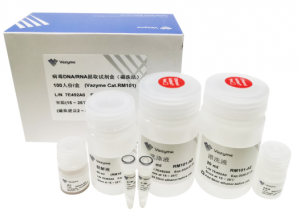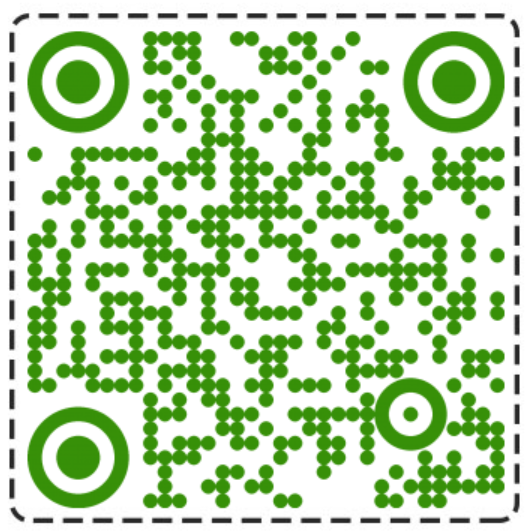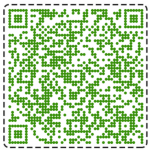Virus DNA/RNA Extraction Kit
(Magnetic Beads Based)
CATALOG:RM101
PACKAGE SIZE:100 tests/Kit

Virus DNA/RNA Extraction Kit
INTENDED USE
This kit is applicable for extracting highly pure viral nucleic acid (DNA/RNA) from samples such as human nasopharyngeal swabs sputum, broncho lavage fluid and alveolar lavage fluid.
The obtained nucleic acid can be directly used in reverse transcription, PCR, RT-qPCR, RT-PCR, next generation sequencing, biochip analysis and other related downstream experiments.
PRINCIPLE
Specially embedded silica-coated superparamagnetic beads are adopted in this kit. In a unique buffer system, the nucleic acids,rather than protein or other impurities, are adsorbed by hydrogen bonds and static electricity. The magnetic beads that have adsorbed nucleic acids are then washed to remove the remaining protein and salt. When low-salt buffer is used, the magnetic beads would release nucleic acids, so as to achieve rapid separation and purification of nucleic acids. With such a simple, fast, safe and efficient operation process, the viral nucleic acids extracted have a high yield, high purity, stable and reliable quality. Therefore, this method is suitable for the automatic extraction at high-throughput workstations.
COMPONENTS
| Reagents | Composition No |
Volume | Function |
|---|---|---|---|
| Magnetic Beads | RM101-AA | 2 mL | |
| Lysis Solution | RM101-AB | 60mL | Provide the Environment for Lysis and Bonding |
| Proteinase K | RM101-AC | 1 mL × 2 | Enzymolysis Sample |
| Washing Buffer 1 | RM101-AD | 38 mL | Remove the Residual Proteins (add 50 mL absolute ethanol before use) |
| Washing Buffer 2 | RM101-AE | 20 mL | Remove Salt ions (add 80 mL absolute ethanol before use) |
| Elution Buffer | RM101-AF | 6 mL | Nuclease-Free Solution |
| *100 tests/Kit | |||
Note:
1. The compositions of kits from different batches shall not be mixed in use.
2. Self-provided Reagent: Absolute ethanol.
3. Before the first use, please add the specified amount of absolute ethanol into the washing buffer 1 and washing buffer 2 by referring to the label on the bottle, and mark it.
4. The magnetic beads shall be fully dispersed by vortex vibration before use.
5. In case of precipitation in the lysis buffer, it can be used after redissolution at room temperature or 37 ℃.
6. Please wear lab coats, disposable latex gloves, disposable masks and apply Nuclease-free consumables, etc. in the use of this kit, to avoid RNase contamination to the greatest extent.
STORAGE AND VALIDITY PERIOD
The validity period of this product is 6 months if stored at room temperature (15 – 25 ℃); the validity period can be extended if stored at 2 – 8 ℃; the product shall be transported at room temperature.
It is recommended to store the magnetic beads at 2 – 8 ℃. Please be noted the beads shall not be stored below 0 ℃.
REQUIRED EQUIPMENT
Magnetic Stand; vortex shaker; centrifuge; pipette, etc.
SAMPLE REQUIREMENTS
1. This extraction reagent is applicable to the following sample types:
upper respiratory tract sample (including nasopharynx swab and sputum); lower respiratory tract sample (including broncho lavage fluid and alveolar lavage fluid).
2. For the specific sampling methods, please refer to Microbe Specimen Collection Manual or Clinical Nursing Practice Guideline.
3. After the samples are collected, the extraction and detection shall be completed on the same day. Otherwise, the samples can be stored as follows: 2 – 8 ℃ for no more than 24 hours; -30~ -15 ℃ for no more than 10 days; -70 ℃ for a long term, but repeated freezing and thawing shall be avoided.
4. Transportation: Adopt foam box and dry ice sealing for transportation.
OPERATION STEPS
Before the first use, please add the specified amount of absolute ethanol into the washing buffer 1 and washing buffer 2 by referring to the label on the bottle, and mark it.
1. Add 200 μl sample (the sample less than 200 μl can be supplemented with normal saline) to be extracted into 1.5 mL Nuclease-free low-adsorption EP tube (self provided), then add 20 μl
proteinase K, and mix it evenly by slight vortex or putting it upside down. After that, add 20 μl magnetic beads and 600 μl lysis buffer, mix them for 15 secs with vortex vibration, and conduct lysis at room
temperature for 5 mins, during which the tube shall be put upside down twice for even mixing.
2. Conduct instantaneous centrifugation, place the EP tube on the magnetic stand, leave it resting for 1 min, and then remove the supernatant with a pipette.
3. Wash: Take the above sample from magnetic stand, add 700 μl washing buffer 1, and mix them evenly with vortex for 15 secs. Then conduct instantaneous centrifugation, put the EP tube on the magnetic stand, leave it resting for 1 min, and thoroughly remove the supernatant.
4. Rinse: Take the above sample from the magnetic stand, add 700 μl washing buffer 2, and mix them evenly with vortex for 15 secs. Then conduct instantaneous centrifugation, put the EP tube on the magnetic stand, leave it resting for 1 min, and thoroughly remove the supernatant.
5. After instantaneous centrifugation, put it on the magnetic stand again and remove the residual supernatant. Remove the lid, and leave it open at room temperature for 3 to 5 mins until no
reflection of light is found on the surface of the beads.
Note: In order to ensure the purity of nucleic acid, the washing buffer 2 shall be removed thoroughly; at the same time, excessive drying (cracking) of magnetic beads will affect the final output.
6. Add 50 μl elution buffer, mix it gently for 15 secs, and leave it resting at room temperature for 3 mins, during which it shall be mixed evenly twice by vibration.
7. After instantaneous centrifugation to the bottom of EP tube, put the sample on the magnetic stand again, and leave it resting for 1 min. Draw the supernatant to a new Nuclease-free centrifuge tube (self provided). It can be used for follow-up detection, or stored for a short term below -30 ~ -15 ℃, or stored for a long term below -70 ℃.
PRECAUTIONS
1. Please read the instructions of the kit carefully before the experiment, and strictly follow the operation steps.
2. The operation can be only conducted by professionally trained personnel wearing protective gears in the laboratory with safety protection measures.
3. The centrifugal tubes and pipette tips to be used shall be autoclaved, DNase-free and RNase-free.
4. The samples to be tested by this kit shall be regarded as infectious substances, so the operation and treatment shall comply with the relevant requirements of the General Guidelines for Biosafety in Microbiological and Biomedical Laboratories and the Regulations on the Management of Medical Wastes issued by the Ministry of Health.
5. The buffer contains guanidine protein denaturant, which is caustic. Please be careful in operation. If it splashes on the skin,please wash it with plenty of water.





